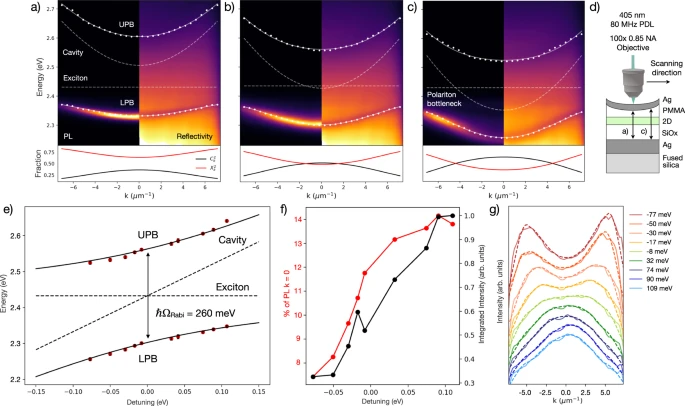Phys.org May 12, 2023
Hybrid perovskites have emerged as a promising material candidate for exciton-polariton (polariton) optoelectronics. Many applications demand precise control of polariton interactions. Thus far, the primary mechanisms by which polaritons relax in perovskites remain unclear. An international team of researchers (USA – MIT, Spain, Italy) sandwiched perovskite in between two precisely spaced reflective surfaces and stimulated them with laser beams. Then they were able to directly control the momentum of exciton-polariton pairs. The combined sate could be perturbed either with light or charge in a more energy-efficient manner. Halide perovskites harvest light well, and turn photons into electrons or excitons, depending on the dimensionality and material properties of the perovskite. To create an optical cavity, they placed tiny flakes of the material between mirrored surfaces. They produced arrays of such condensates but typically only at ultralow, cryogenic temperatures so far. The materials involved are easily manufactured using room-temperature, solution-based processing methods, and thus could be relatively easy to produce at scale once practical systems are designed. According to the researchers their work could help pave the way for new kinds of devices that efficiently bridge the gap between matter and light including computer chips, and qubits… read more. Open Access TECHNICAL ARTICLE

Room-temperature exciton-polariton formation. Credit: Nature Communications volume 14, Article number: 2426 (2023)